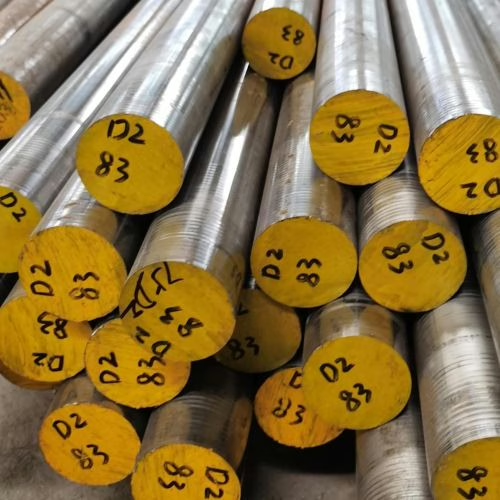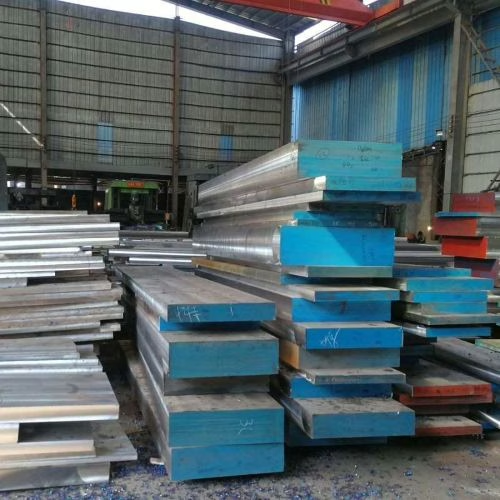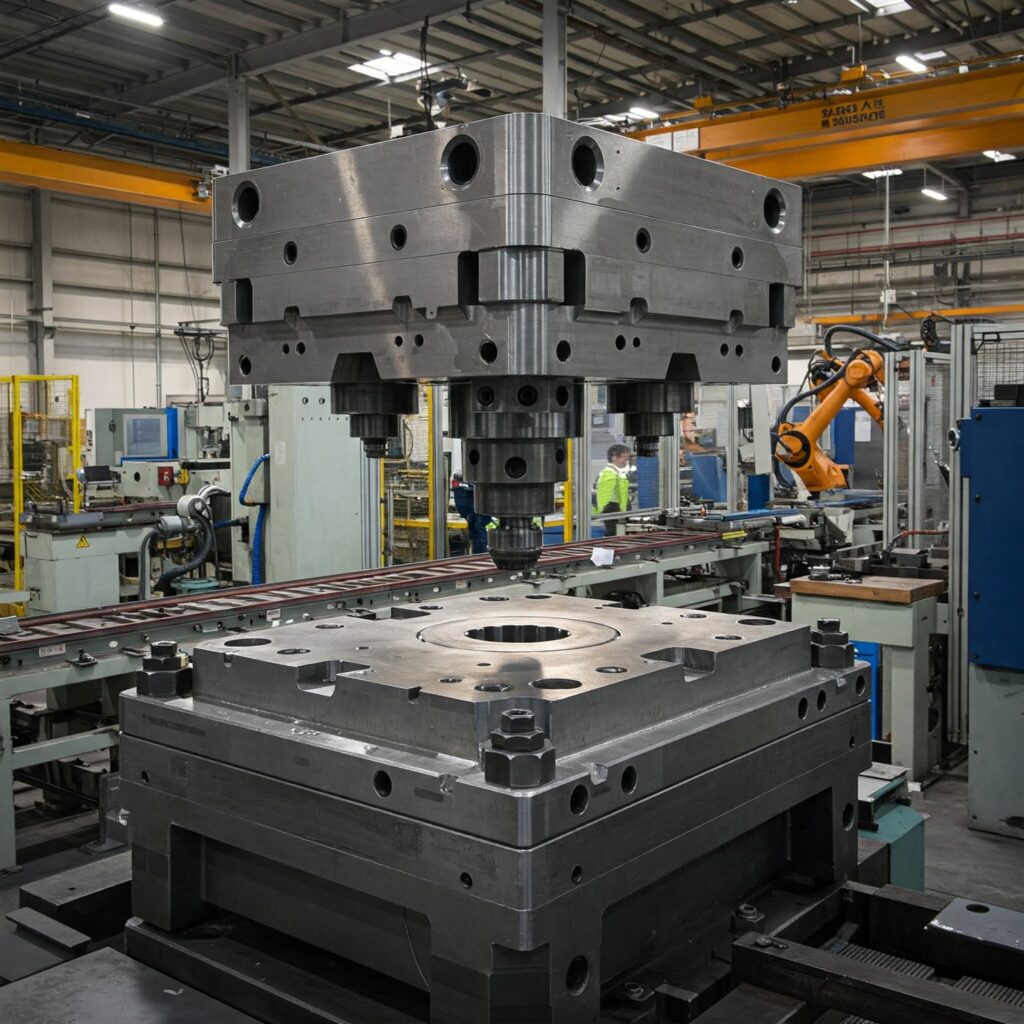Tahmini okuma süresi: 7 dakika
Önemli Çıkarımlar
- D2 steel is a high-carbon, high-chromium cold-work tool steel, while 4140 is a medium-carbon, low-alloy structural steel.
- D2 offers exceptional wear resistance and high hardness (60-62 HRC), yet has limited toughness compared to 4140.
- 4140 steel provides a good balance of strength and toughness, making it suitable for parts under dynamic loads.
- Key applications include D2 for cutting tools and dies, and 4140 for automotive components and drive shafts.
- Choose D2 for wear resistance and dimensional stability; opt for 4140 for strength and toughness.
İçindekiler
D2 çeliği ve 4140: D2 takım çeliği Ve 4140 çelik Her ikisi de önemli demir alaşımlarıdır, ancak farklı sınıflara aittirler ve farklı uygulamalar için tasarlanmışlardır, benzersiz özellikler gösterirler ve özel ısıl işlemler gerektirirler.
D2 steel is a high-carbon, high-chromium cold-work tool steel. It belongs to the D-series tool steels, which are specifically designed for manufacturing tools, dies, and punches used under demanding conditions for cutting, forming, or machining other materials. Primarily employed for cold work applications, D2 steel typically operates below 200°C, often at room temperature. Among all high-carbon, high-chromium tool steels, D2 stands as a highly significant and representative grade.
AISI 4140 steel is a medium-carbon, low-alloy structural steel, also known as construction steel. Its most significant value lies in the balance between strength and toughness. It is a chromium-molybdenum (Cr-Mo) steel, often grouped with other ultra-high-strength steels such as 4130 and 4340. Although 4140 is highly popular in manufacturing and tooling, it is not classified as tool steel. It is typically supplied in forms such as bars and plates, and achieves specific mechanical properties through heat treatment, making it well-suited for manufacturing high-strength shaft components. It is essential to note that this type of low-alloy steel is not suitable for withstanding high temperatures.


Kompozisyon
The properties of D2 steel are determined by its high carbon and high chromium content. The substantial presence of these two elements results in the formation of a large quantity of extremely hard chromium-rich carbides within the steel. 4140 steel, on the other hand, is a medium-carbon alloy steel. Its primary alloying elements are chromium (Cr) and molybdenum (Mo). Molybdenum is particularly crucial in 4140 steel, as it ensures the development of an ideal, fine microstructure after heat treatment. This microstructure is key to achieving the balance of strength and toughness characteristic of 4140 steel.
| Element | D2 Takım Çeliği (%) | 4140 Çelik (%) |
| Karbon (C) | 1.40 – 1.60 | 0.38 – 0.43 |
| Krom (Cr) | 11.00 – 13.00 | 0.80 – 1.10 |
| Molibden (Mo) | 0.70 – 1.20 | 0.15 – 0.25 |
| Manganez (Mn) | 0.10 – 0.60 | 0.75 – 1.00 |
| Vanadyum (V) | 0.50 – 1.10 | – |
| Silisyum (Si) | 0.10 – 0.60 | 0.15 – 0.35 |
| Fosfor (P) | ≤ 0,03 | ≤ 0,035 |
| Sülfür (S) | ≤ 0,03 | ≤ 0,040 |
Mekanik Özellikler
The primary advantage of D2 lies in its exceptional wear resistance. Its high carbon and high chromium composition forms a large number of hard carbides in the microstructure. D2 exhibits extremely high hardness, typically reaching 60 to 62 HRC (Rockwell hardness). 4140 steel can also achieve high strength and hardness through heat treatment, but its hardness values vary significantly depending on the tempering temperature. While it can attain high surface hardness in specific applications (such as nitriding), this is not its core strength.
Compared to D2, one advantage of 4140 is that it strikes a good balance between strength and toughness, making it well-suited for parts subjected to dynamic loads. D2 exhibits moderate toughness and is relatively brittle, especially when compared to specialized impact-resistant steels. While D2 can be used for long-lasting production tools, its limited toughness often leads to its application as an “insert” embedded within a tougher die body, rather than as a standalone component subjected to significant impact.
In terms of absolute load-bearing capacity, the difference between the two is substantial. 4140 Steel: When properly heat-treated, 4140 achieves exceptionally high strength. Ultimate Tensile Strength (UTS): Up to 1965 MPa; Yield Strength: Up to 1740 MPa. This high-strength characteristic, combined with its resistance to torsion and reverse stresses, makes it ideal for manufacturing components like drive shafts. In its standard tempered state, D2’s strength is substantially lower than that of heat-treated 4140. Ultimate tensile strength (UTS) is approximately 758 MPa; yield strength is approximately 411 MPa. D2’s primary characteristic is wear resistance, notwithstanding extreme structural loads.
- Sertlik. D2 çelik sertliği Isıl işlemden sonra 60 ila 62 HRC'dir. 4140 çeliği de ısıl işlemle yüksek sertliğe ulaşabilse de, bu değer D2 çeliğinden daha düşüktür. Söndürülmüş ve temperlenmiş 4140 çeliği, temperleme sıcaklığına bağlı olarak 235 HB ile 578 HB arasında değişebilir.
- SertleştirilebilirlikD2, hava ile sertleşen bir çeliktir; yani havada soğutularak sertleştirilebilir ve bu da bozulmayı en aza indirir. 4140 çeliği orta düzeyde sertleştirilebilirliğe sahiptir. İnce kesitlerde hava ile sertleştirilebilirken, pratikte genellikle tam sertleştirme için yağda soğutulur.
- SertlikD2 çeliğinin tokluğu düşüktür. Ancak, 4140 çeliğinin tokluğu daha iyidir. Tokluk özellikleri tavlama sıcaklığından etkilenir; örneğin, mavi kırılganlığı önlemek için genellikle 230 ila 370°C (450 ila 700°F) arasında tavlamadan kaçınılır.
- Aşınma Direnci. D2 steel has extremely high wear resistance, higher than that of 4140 steel. 4140 Steel can significantly improve its wear resistance through surface hardening treatments such as nitriding or induction hardening.
- İşlenebilirlikD2, 100 dereceli 1% karbon çeliğine kıyasla 45 dereceli işlenebilirlik ile zayıf işlenebilirliğe sahiptir. 4140, özellikle SAE 1140 gibi kükürtlenmiş versiyonları iyi işlenebilirliğe sahiptir.
- Boyutsal KararlılıkD2 çeliği, ısıl işlem sırasında minimum deformasyona uğrar. Hava ile söndürüldüğünde, inç başına yaklaşık 0,0005 inç (0,0005 mm/mm) genleşir veya büzülür. 4140 çeliğinin boyut kararlılığı genellikle iyidir, ancak tüm çelikler gibi, özellikle yüksek karbon içeriğine sahip olduğunda, söndürme sırasında bozulmaya maruz kalır ve bu da çatlama olasılığını artırabilir.
Fabrication and Heat Treatment
D2 is an air-hardening tool steel that achieves high hardness through air cooling, exhibiting minimal dimensional changes and deformation during the heat treatment process. Consequently, D2 is suitable for high-precision mold manufacturing. 4140 steel undergoes heat treatment through quenching and tempering. To achieve high strength, it is typically oil-quenched, followed by tempering within a broad temperature range of 205°C to 705°C, to precisely attain the desired strength and toughness.
D2 steel is tough to machine and grind. Its high carbon content and significant chromium content result in poor machinability. 4140, on the other hand, is much easier to machine. Additionally, grades like SAE 41L40, which incorporate added sulfur (S), are available on the market and offer improved machinability even in hardened conditions.
D2 and 4140 steel are both challenging to weld due to their high carbon content and significant carbide content in their microstructure, making conventional welding methods challenging.
Uygulamalar
The selection between D2 and 4140 is guided entirely by the intended function, specifically whether the part needs maximum surface abrasion resistance or maximum bulk strength and toughness.
D2 çeliği, uzun vadeli üretim, yüksek aşınma direnci ve boyutsal kararlılık gerektiren uygulamalar için uygundur. Tipik uygulama alanları arasında kesme ve damgalama takımları ve kalıpları, delme kalıpları ve takımları, dövme işlemleri ve düzeltme takımları bulunur.
4140 çeliği, orta düzeyde sertleştirilebilirlik ve iyi mukavemet ve tokluk gerektiren bileşenler için uygun, çok yönlü bir mühendislik çeliğidir. Başlıca uygulama alanları arasında tahrik milleri, yüksek yük taşıyan otomotiv bileşenleri için miller, kritik uygulamalardaki dişliler ve otomotiv motorlarındaki yüksek yük taşıyan bileşenler bulunur.
| Çelik Sınıfı | Key Application Attributes | Examples of Use |
| D2 Çelik | Excellent wear resistance; Long-run capability; Dimensional stability; Cold-work operations. | Shafting, gears, axles, crank shafts, machine parts, highly loaded gearing, cold-headed/cold-forged fasteners, and core material for nitrided components. |
| 4140 Çelik | High core strength and toughness; Resistance to dynamic/torsional stresses; Suitable for moderate hardenability needs. | Shafting, gears, axles, crank shafts, machine parts, highly loaded gearing, cold-headed/cold-forged fasteners, core material for nitrided components. |
Özet
Overall, when your primary requirement is exceptional wear resistance and high dimensional stability must be ensured during heat treatment, D2 steel is the professional specialty material. When you need to manufacture heavy-duty mechanical components that prioritize the material’s high core strength, ability to withstand dynamic loads, and overall toughness, 4140 is the superior choice.


